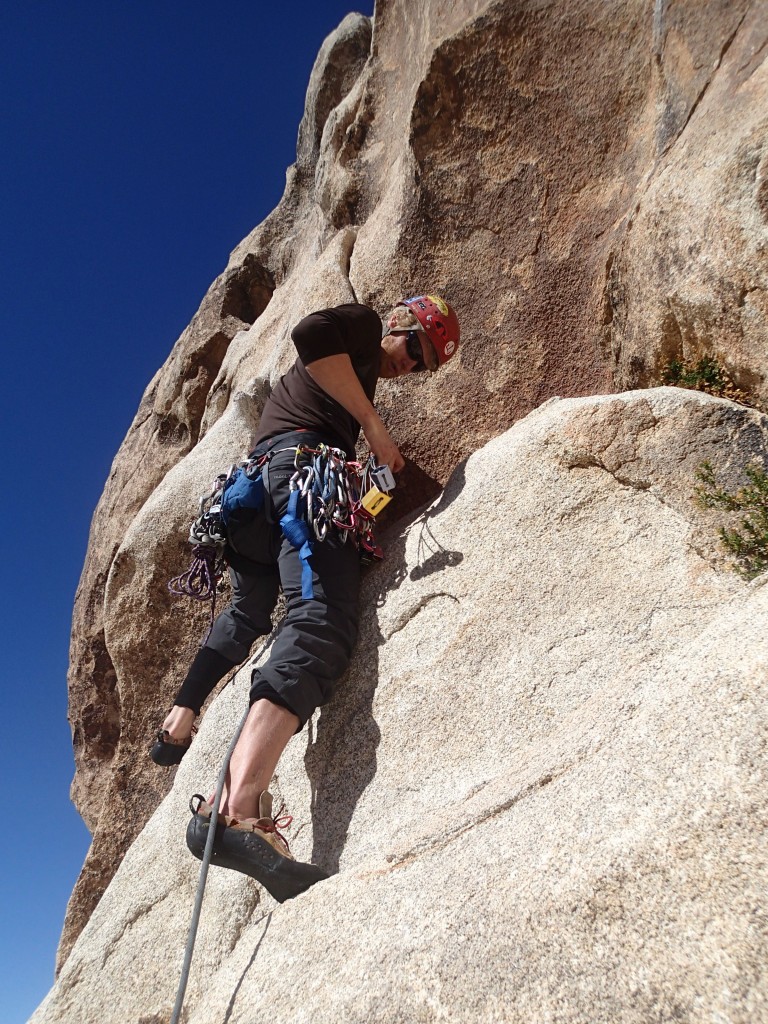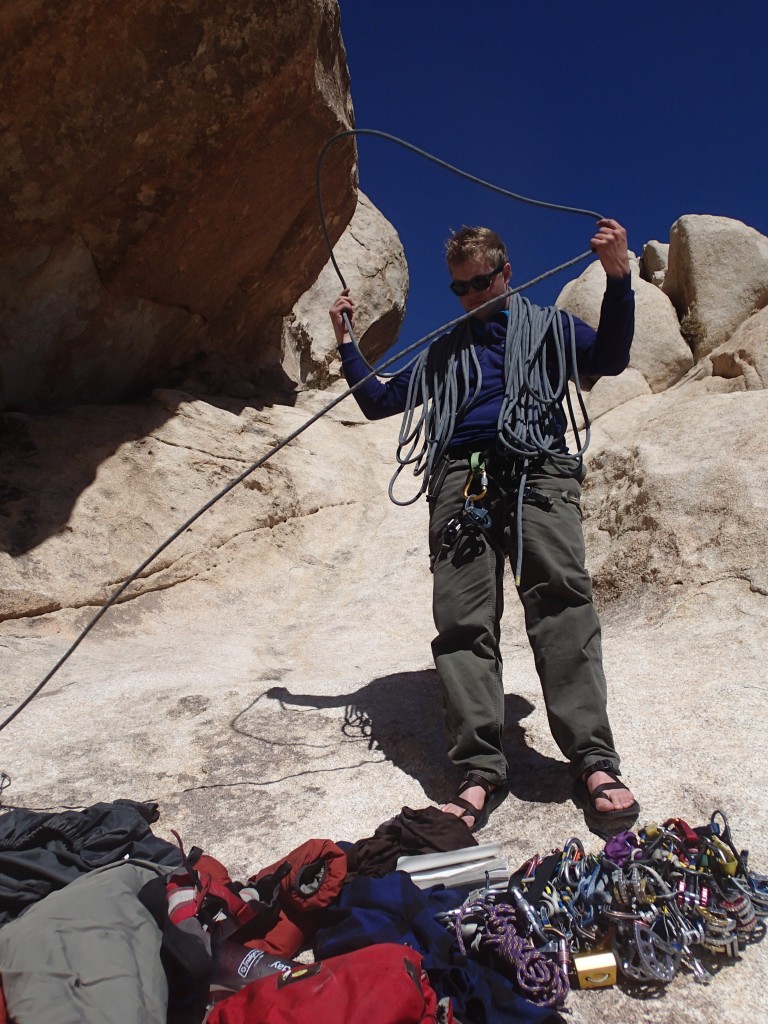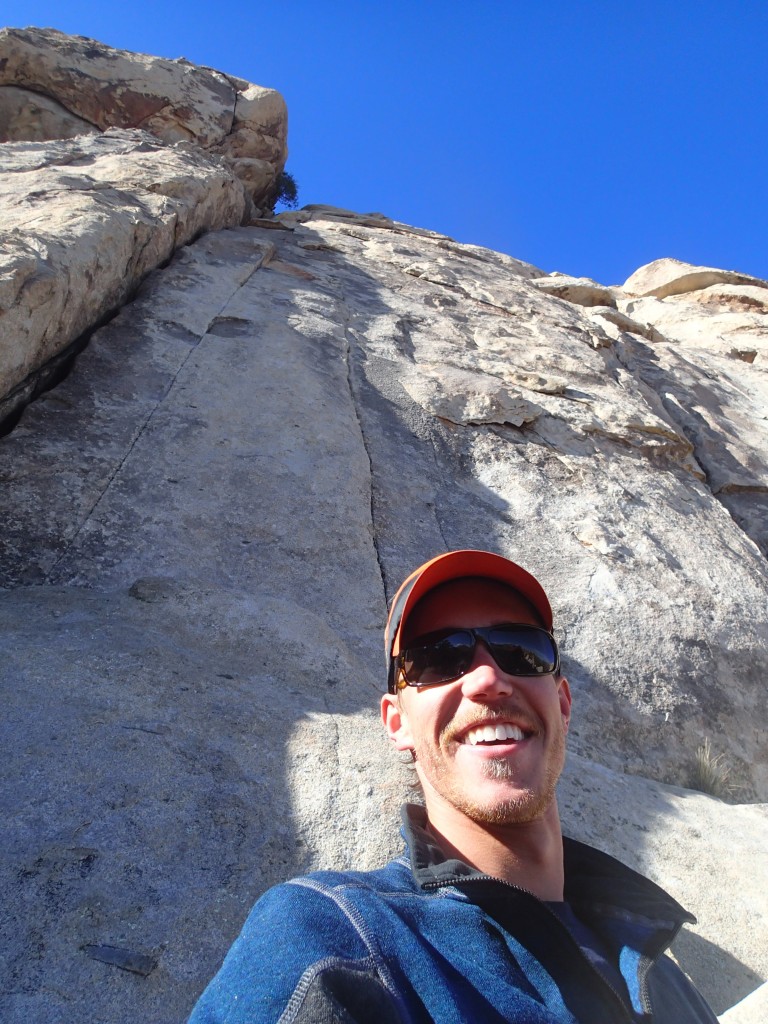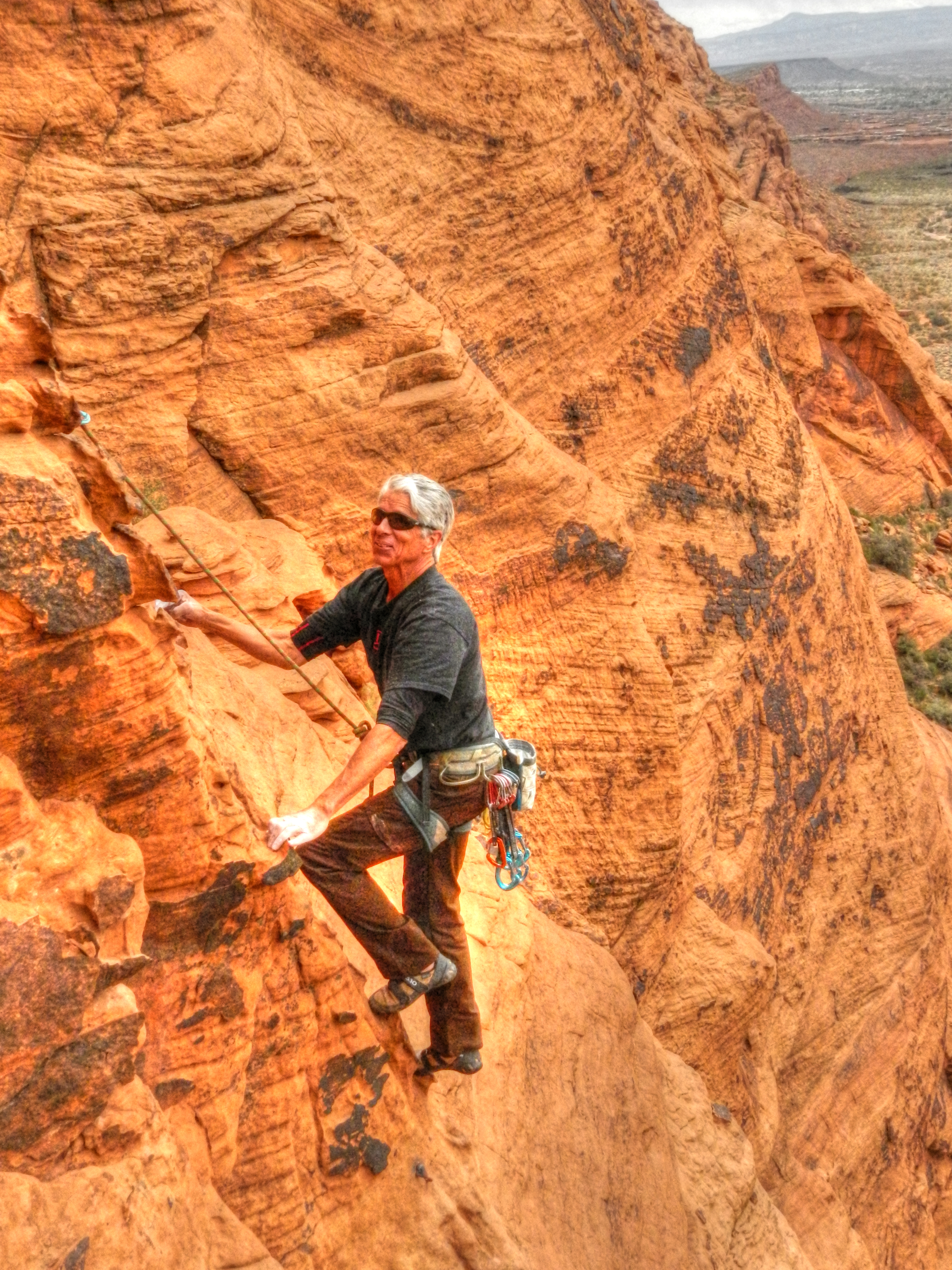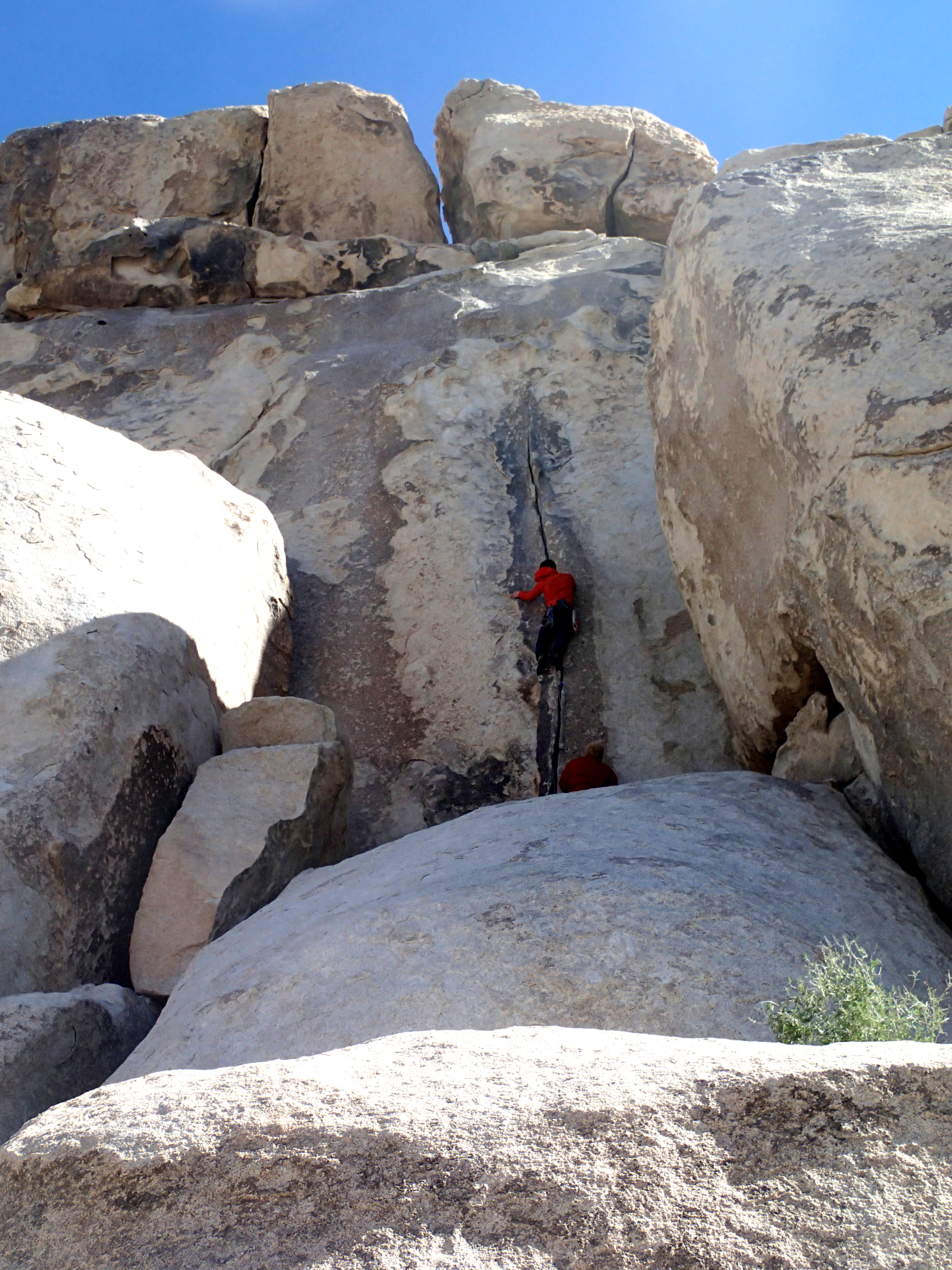
Two days in Joshua Tree National Park is an amazing experience regardless of ones ambitions. Its layout is massive, covering some 800,000 acres of land and the diversity of the dueling desert environments is intellectually compelling. Aside from the trivia, once you arrive, you won’t be able to stop thinking, “this place is so weird!” The granite monoliths shooting up from the flat desert floor creates a surreal contrast that’s hard to wrap your head around. It feels like living in a Martian world for a couple of days!
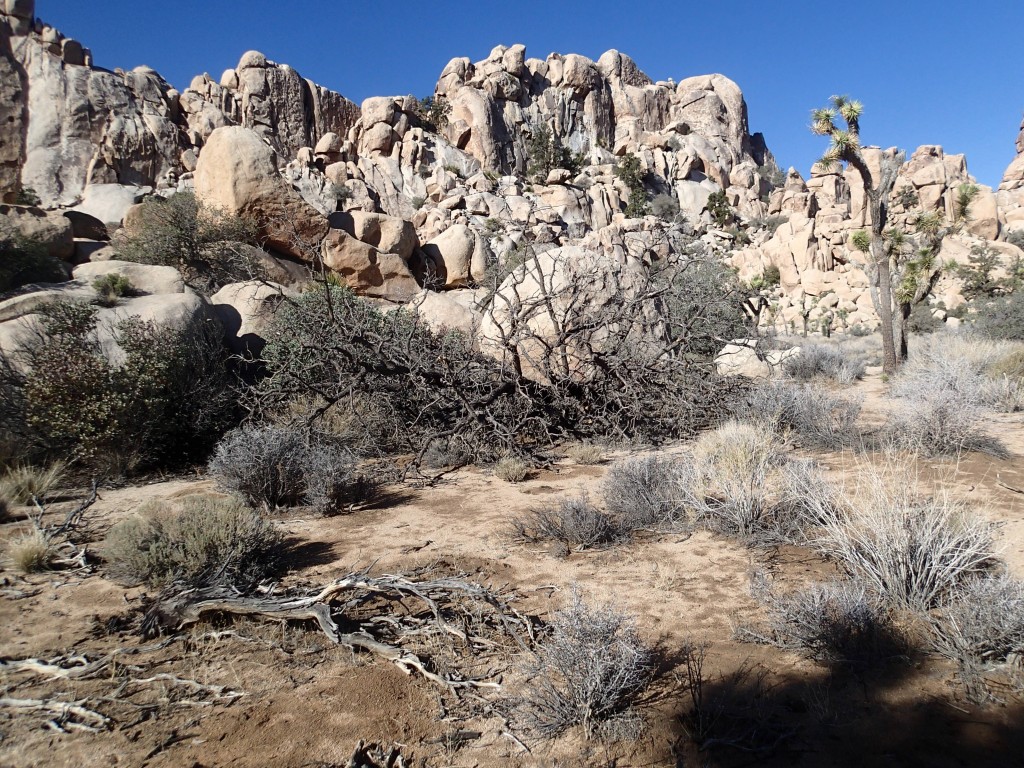
Joshua Tree’s landscape is staggering, even to someone who explores the southwest on a regular basis.
The history of the area is just as neat as the space itself. Joshua Tree offers a higher elevation which contributes to its relative livability in the desert, and multiple oases where water and shade are accessible. In fact, the area is so good at supporting life, Joshua Tree is renowned for its plant diversity, winning it a proposal for preservation as early as the 1930’s along with the very exciting title of Desert Pants Nat. Park… good thing they went with J-Tree (“Joshua Tree”). These features drew in various peoples over the passing years from the Pinto, Paiute, Cahuilla, Serrano, and the Chemehuev to Cattle Man, Miners, and Homesteaders of late. Today, an abundance of people like you and I visit the park for many different reasons. Mine was to visit some of the more modern works of art left by a very different group of visitors, Rock Climbers.
As a climber I see the area having a radical energy. Not in the sense that it’s “far out dude,” but that the developers of the area were visionaries caught between two worlds. On one hand the legends of old Yosemite cried “traditional climbing!” and on the other, the emerging idea of sport climbing and fixed anchors gave life to harder more futuristic lines. The blend makes for some very difficult and often terrifying climbs. That said, with some 3,000 routes in the area there are plenty of climbs that are doable for the average Joe that won’t make you wet your 70’s climbing spandos.
Day one we took off to the Hemingway Wall in the Lost Horse Area and climbed the classic “White Lighting” and “The Overseer”. Rated at a modest 5.7-5.9 and offering decent protection, these two seemed to be a great way to warm up to the bold reputation and coarse rock of J-Tree. Later that day we moved back toward our camping area at Hidden Valley, a great location to sample many climbs in the park. We climbed another classic 5.7, “Double Cross,” after watching a soloist climb it without ropes or protection of any kind! With a difficult crux low on the route it definitely offered us an understanding of how the ratings of climbs have changed over the years. In short, during a portion of climbing history the hardest rock climb would be rated 5.9, meaning the climb “Double Cross” would have been just two grades below what was then considered the pinnacle of difficulty at the time. Needless to say a modern climber is sure to be surprised at the difficulty of a climb rated at 5.7 when he or she may be used to a system that reaches 5.15c and is capable of climbing up to 5.10. Regardless, the climb was fantastic and as we wrapped up our day of climbing we sat and watched a group of 15 people top out and pose for a picture on top of the famed Intersection Rock towering 150 ft above the campsite floor. We watched them rappel the route by head lamp; 15 little lightning bugs strolling down the side of a black silhouette slowly being lit up by the light of a full moon.
We sat around a fire discussing the day’s climbs and marveling at the stories of old from the guide book. When our interest in books diminished we turned our attention to the landscape again. Now the rock was bright white basking in the moon light. Without another thought we began scrambling our way to the top of the nearest formation to sneak a peek at the new vista. From the top the scene was calm and brilliant. We could see more campfires than we cared to count and enjoyed the distant chatter of hundreds of people in what felt like a shared experience in one of the most interesting places in the west.
Day two brought us to the Hall of Horrors Area where we ticked “Lazy Day,” 5.7 and the classic splitter finger crack “The Exorcist,” 5.10a. We finished with top roping on the “Buckets to Burbank Wall.” The top is easily accessible via scrambling up the left side of the formation. The climbing was again ridiculously fun despite some harsh wind and cool temps. We walked back to the car weaving through the Joshuas, tired and ready for dinner. We slept again under a moonlit sky wishing we could stay longer. But as all great things come to a close, sunrise brought an end to our time in J-Tree. I wouldn’t hesitate to make the trip back from St. George to spend more time exploring the area. I consider it a must see if you’re road tripping through the South West!
Author: Bryan Teaters, Paragon Guide
